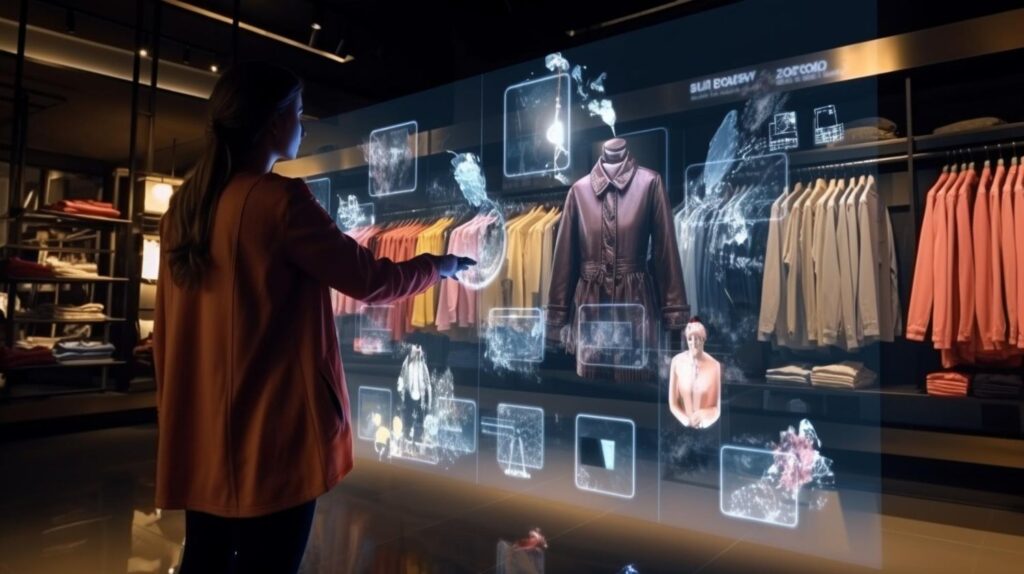In 2025, AI product recommendations have evolved from being a nice-to-have feature to a shopper expectation. Recent surveys reveal that 73% of American consumers now expect retailers to offer personalized suggestions—be it online, on mobile apps, or even in physical stores.
What’s behind this shift? Consumers crave convenience. And artificial intelligence (AI) is the key to delivering shopping experiences that feel effortless, curated, and relevant. With vast inventories and fierce competition, retailers can no longer afford to present one-size-fits-all solutions.
This blog explores why AI product recommendations matter so much today, how the technology works, real-world use cases, and how companies—like Glance—are enhancing shopping through subtle but powerful personalization tools.
(Curious about visual shopping experiences powered by AI? Head to Glance for more.)
Why 73% of Shoppers Now Expect AI Product Recommendations
Personalization is the New Baseline
Consumers have grown accustomed to tailored experiences across platforms. From Netflix suggesting what to watch next to Spotify curating playlists, personalized services have redefined user expectations. Naturally, retail isn’t exempt.
AI product recommendations provide that personalization by analyzing shopper behavior, preferences, purchase history, and even time of day. Rather than scrolling through endless product lists, customers want to be shown what they are likely to want—instantly.
“Shoppers today expect a tailored journey. When a retailer knows what you want before you do, it turns browsing into a seamless, enjoyable experience.”
— Retail Tech Insights, 2025
When a customer consistently sees suggestions that reflect their tastes—say, eco-friendly beauty products or minimalist home décor—they’re more likely to trust the platform, explore more products, and make repeat purchases.

Better Engagement, More Sales
Retailers that invest in AI product recommendations don’t just meet consumer expectations—they see measurable business benefits.
According to industry data:
- The AI recommendation system market is expected to grow from $2.21 billion in 2024 to $2.44 billion in 2025, a CAGR of 10.5%.
- Retailers using AI-driven recommendations see up to a 15% increase in conversions.
- Average order values (AOV) increase as customers are shown complementary products in real-time.
Consider this:
- A customer shopping for a laptop might be recommended a compatible mouse, backpack, and extended warranty.
- Shoppers who receive AI suggestions are 25% more likely to return and shop again.
“AI product recommendations are no longer optional—they’re expected. Consumers want brands to anticipate their needs and make shopping effortless.”
— Industry analyst, Exploding Topics, 2025
The data makes it clear: not using AI puts retailers at a competitive disadvantage.
How AI Product Recommendations Actually Work
Collaborative Filtering
Collaborative filtering is one of the foundational techniques. It uses the behavior of similar users to suggest new products.
- User-based filtering: “Shoppers like you also bought…”
- Item-based filtering: “Customers who bought this also bought…”
So, if you’ve purchased wireless earbuds and portable speakers, the system might recommend other trending audio gadgets or accessories that similar customers have added to their carts.
Content-Based Filtering
Instead of relying on what others do, content-based filtering recommends items based on the product attributes that you prefer.
- If you’ve viewed multiple linen shirts from sustainable brands, the system might suggest more breathable, eco-friendly summerwear.
- A skincare enthusiast exploring retinol creams might see serums or moisturizers with similar active ingredients.
This approach is highly specific and keeps the recommendations tightly aligned to individual tastes.
Hybrid Models: The Best of Both Worlds
Most modern platforms combine both collaborative and content-based filtering in hybrid recommendation engines.
Benefits include:
- Handling “cold start” problems (new products or users)
- Improved diversity in suggestions
- Greater accuracy through layered context
“The future of retail lies in predictive experiences—users should feel like the platform knows their preferences, even if they don’t articulate them.”
— Forrester Research, 2025 Retail Forecast
These hybrid systems are what power the product suggestions we see on Amazon, Walmart, and yes—even smart visual platforms like Glance.
Real-World Use Cases and Impact
| Brand | Use Case | Results |
| Amazon | Personalized homepage & “Buy It Again” sections | 40% of purchases stem from recommendations |
| Netflix | Content suggestions based on viewing behavior | 50% drop in user churn |
| Target | In-store kiosks with personalized offers | 20% boost in omnichannel loyalty |
| Walmart | AI for dynamic pricing + bundling offers | 15% reduction in overstock, 30% fewer stock-outs |
2024 Holiday Season Recap
During the last holiday season, platforms with AI-driven product recommendations reported:
- 4% increase in online sales
- Higher AOV through bundling suggestions
- More successful flash sales due to precise targeting
AI turned the usual chaos of the shopping season into a data-driven success story.
Why It Works: The Consumer Perspective
Saves Time and Reduces Choice Overload
Modern shoppers don’t want more options—they want better ones.
AI product recommendations filter through thousands of SKUs to serve a refined shortlist:
- Busy parents can see top-rated kid-friendly snacks or toys without digging.
- Students shopping on a budget might be shown deals tailored to their price point.
Time saved = value added.
Encourages Discovery
AI can introduce shoppers to items they might not have considered:
- A customer shopping for sneakers may be shown limited-edition colors or trending athleisure wear.
- A book buyer might be recommended new authors based on thematic similarities, not just genre.
This surprise-and-delight factor keeps engagement high.
Builds Trust and Brand Affinity
Repeated, relevant suggestions signal that the platform “gets” the shopper. That builds:
- Trust in the platform
- Increased loyalty over time
- Higher customer lifetime value
Retailers can also use AI in newsletters and promotions:
- “Recommended for You” sections in email campaigns
- Personalized birthday or anniversary discounts
- Loyalty program offers based on past habits
All of these deepen the customer-brand connection.
How Glance Uses AI to Make Shopping Visually Engaging
Though not always front and center, platforms like Glance use AI product recommendations to elevate shopping into an immersive experience. Rather than static lists, Glance uses AI to curate visuals, trend-driven picks, and style lookbooks personalized to each user. Glance makes discovery visually intuitive.
The American Consumer’s Journey: Omnichannel, Inclusive, and Always-On
Omnichannel is Here to Stay
Americans shop across devices and contexts. AI helps unify that journey:
- Cart Syncing across devices
- Push notifications that recommend back-in-stock items
- In-store digital touchpoints that use loyalty data to suggest products
Everything works together to create a single, fluid experience.
Making Shopping More Inclusive
AI product recommendations are also enhancing access:
- Voice commands for visually impaired users
- Localized languages and culturally relevant recommendations
- Simplified interfaces for those with cognitive challenges
Retail becomes more equitable when personalized properly.
What’s Next for AI Product Recommendations?
Smarter Data, Smarter Suggestions
The next leap involves using:
- Visual search inputs (e.g., snap a photo, get suggestions)
- Sentiment analysis from reviews and social posts
- Real-time behavior (clicks, hovers, wishlists)
These will help recommendations feel even more intuitive.
Generative AI + Recommendation Engines
Imagine this:
- Real-time lookbooks based on what’s in your cart
- Auto-generated promo banners with your name, style, and favorite color
- Voice assistants that recommend outfits or gadgets based on mood and weather
That’s not science fiction—it’s around the corner.
Ethics and Transparency
As AI gets smarter, consumers will demand clarity:
- Why is a product being recommended?
- What data was used?
- Can I control what gets shown to me?
The answer lies in ethical AI design with opt-outs and full transparency.
Conclusion
AI product recommendations have transformed shopping into a dynamic, data-driven, and deeply personalized experience. With 73% of shoppers now expecting these recommendations, retailers must act—or risk falling behind.
From collaborative filtering to hybrid engines, the tech is both effective and essential. Platforms like Amazon, Target, and Glance show that the right recommendation at the right time isn’t just helpful—it’s powerful.
As innovation continues, expect AI product recommendations to become even more seamless, ethical, inclusive, and creative. For American consumers, that means less friction, more discovery, and shopping that feels tailored—not transactional.




